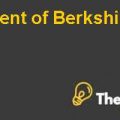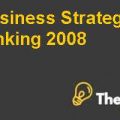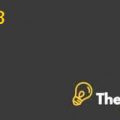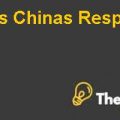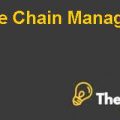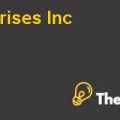Three Jays Corporation Case Study Solution
Introduction
The Three Jays Company is a well-known company of Jams and Jellies which started by Jana Fremont in 2005 but established but his grandfather in 1954 after the war of Korean. (Davis, August 26, 2014)Three jays corporation is the wholly owned subsidiary of Fremont’ jam and jellies. Fremont Jam and Jellies was initially a contract manufacturer, which produces the variety of fruit jams and jellies from different fruits. The products of Jam and Jellies distribute in the United States, where they were loved by consumers. The manufacturer produces the products, especially to small food chains and stores of the United States. Demand for the products is good in the marketplace and the company is in a good financial state. The company is now trying to grow the business by marketing practices, but the company invests a lot of funds on inventory, which is in stock. Now the company thinks about reduction in current inventory helps the company to increase working capital from which the company can arrange campaigns.
Problem Statement
The main problem which the president of Three Jays Company faces was the excess amount of inventory is available in stock the level of inventory is high as compare to demand, so he wants to solve this issue by assigning this task to a new internee of the company. The owner wants to recalculate the EOQ and ROP of the company.
Overview of the making Jams and Jellies
The founder of the company starts the business by processing the nearby developed fruits. The flavors of the Jams and Jellies which produce from fruits are Blue berry, strawberry, Apple and Mint, Peaches and Cherries. The products of the FJ&J are the very organic and healthy. There are six types of jams and jellies in the product line of the company. These six types of jams and jellies packed in 04 different size of jars. The production of Jams and Jellies in the Three Jays Company is simple. In the one room whole raw material and ingredients are to be stored which further processed and measured according to cooking limit then the whole stuff moves towards kitchen area where the Jam and Jellies cooks for about 20 to 25 minutes and in final moves cooked Jam and Jellies to vacuum about 10 minutes for final tasting and eliminate the bubbles create during cooking in the kitchen.
Research and Discussions
Existing inventory system and policies
The initial company uses the FIFO method for valuing the inventory. In this approach company sold those Jam Jellies. initially who comes in the stock first means first in first out. The manufactured jars of Jams and Jellies placed towards the warehouse where the stock is assembled for sale to value chain suppliers and market stores who sell the products to the customers. The Policies of the company are the quality-based food products which fulfil the nutrition of consumers with high satisfaction. A variety of organic products are being produced by the company. The company always deliver the fresh products to the market.
EOQ and ROP
EOQ is simply the order quantity which a company purchase for reducing the cost of inventory. The main goal of this model for the industry is cost minimization with profit maximization. Economic Order Quantity is the model used to make Jams and Jellies. This model is helpful for the three jays company to determine how many slots of the production we can do what should be the size of jars and working on labels.
The minimum level of stock or inventory of Jams and Jellies that starts the rearrangement of coming inventory is known as Reorder Point. In the Three Way Company, the ROP is equal to the three weeks inventory of the company for separate stock keeping unit created on the regular demand as determined by the trades for the initially full year of processes.
The EOQ and ROP is used from January to July 2012 is mentioned in below appendices, but here I am explaining a few of the things for better understanding the EOQ and ROP of the company of year 2012 on a monthly basis.
- In the Appendices 01, the total setup cost is 63.70 with a holding cost of 9% which remains same for all the labels of Jams and Jellies in all the months from January to July. The Demand of the product varies continuously in all the months with changing unit cost, which results change in Value of EOQ and ROP constantly. In January 2012 the demand of Strawberry, Raspberry, Peach, Blueberry and Apple mint are 345, 229, 156, 92 and 66 respectively with the EOQ of 131.27, 80.10, 90.67, 67 and 59.58 respectively with the ROP of 19.90, 13.21, 9.00, 5.31 and 3.81.
For clear understanding, every calculation is well defined in Appendices....
Three Jays Corporation Case Study Solution
This is just a sample partial case solution. Please place the order on the website to order your own originally done case solution.

